|
M. FORD CREECH ANTIQUES & FINE ARTS
SILVER-MOUNTED LEATHER BLACK-JACK
Maker's Mark I.T, Within a Pelleted Oval
England, 18th Century
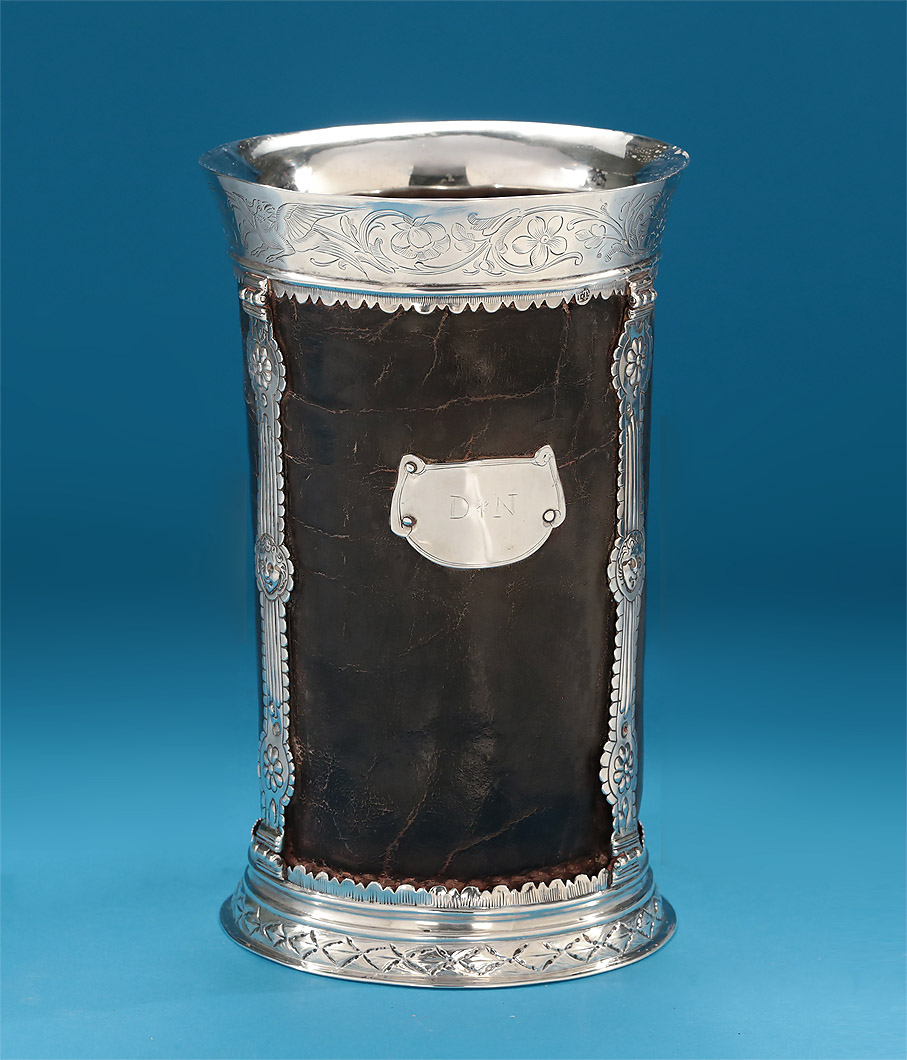
|
|
Of large beaker form, the tapering stitched leather vessel having a silver foot and rim mount,
the rim mount engraved with scrolling foliage and flora centering gryphons,
and above an incised scalloped edge,
the lower mount also with scalloped and vertically incised border
over a spreading footrim chased with laurel diapering;
the top and bottom mounts connected by three hinged strapwork supports having scalloped edges
and chased central mask faces between upper and lower flowerheads;
the front with a shaped silver cartouche scratch-initialed D * N;
the bottom of the vessel recessed
Each silver mount marked with I.T within a pelleted oval
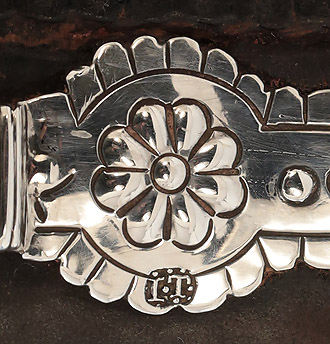
Note :
Most black-jack vessels are of a handled form, many with bulges to the bottom and sides.
The tapering cylindrical beaker is less usual - but known.
See the image below, dated 1679,
pictured in Old London Silver, Montague Howard, p. 115, Pl. No. 71
Condition : Excellent for age and materials;
minor expected cracking to the leather but without splits,
the leather has shrunk away from the base (which is proper) but is not loose fitting,
decoration is very good; sits flat on table; missing two silver pins
8.25" High / 5.25" Diameter / 44 Fl. oz. (Volume)
SOLD
#7198
Please Inquire
|
|
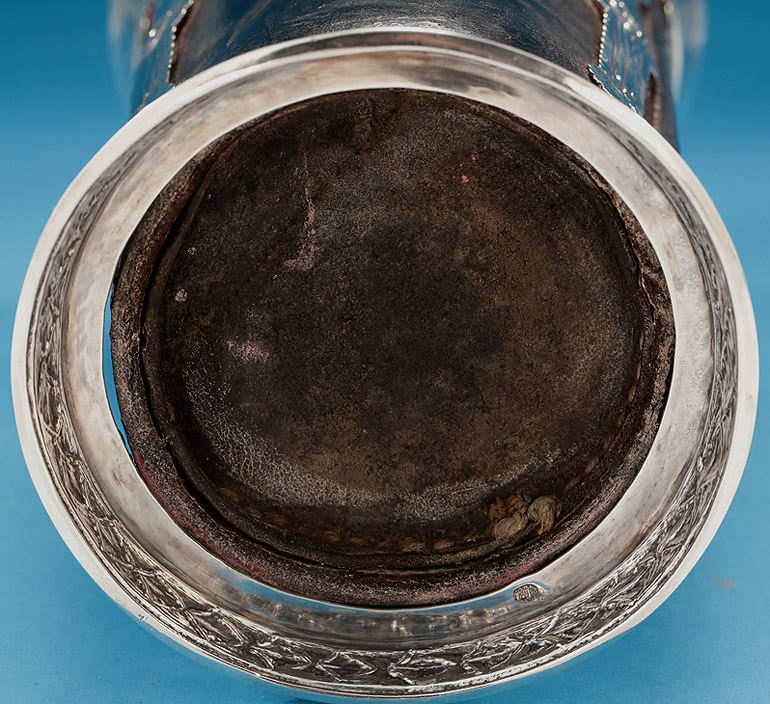
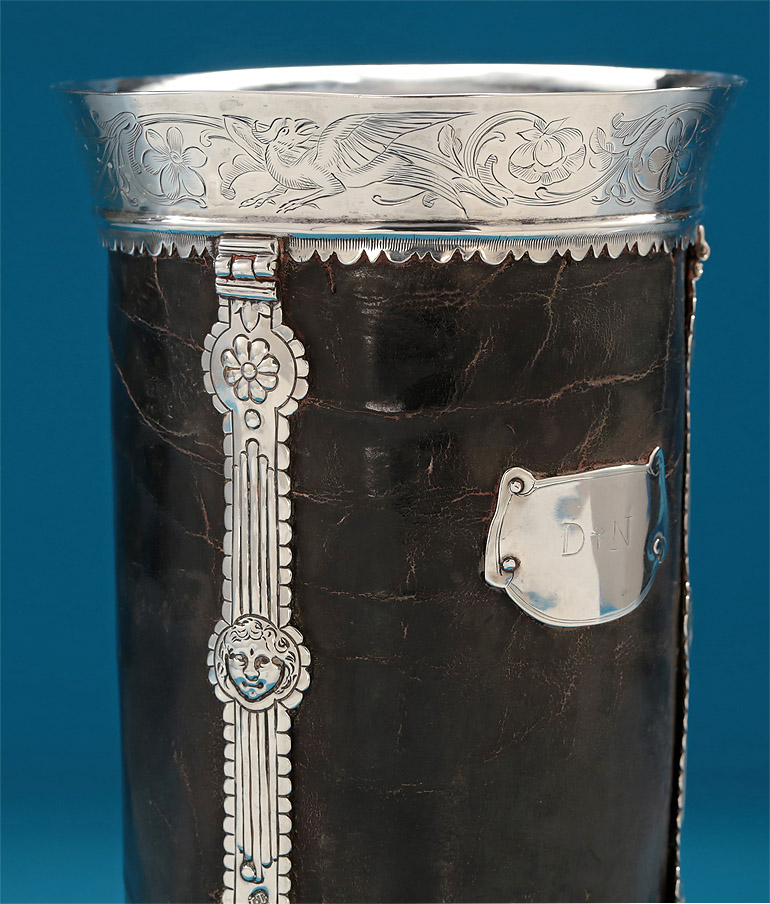
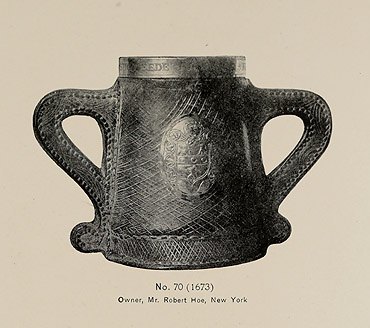
| |
THE BRITISH "BLACK-JACK"
Although the use of leather drinking vessels extends to ancient times, their use in Britain is longer -
and in greater number - than anywhere else in history.
A Neolithic beaker of tanned cowhide, with some hair still attached, was found at West Smithfield, London.
And waterproof leather bags joined by the neck, referred to as drinking vessels,
were introduced into England during the Crusades.
These were but forerunners of the hard bodied water bottle -
and the well loved quintessentially British leather "Black-Jack".
For those of you unfamiliar with the black-jack :
"The 'Black-Jack' was a kind of leather pitcher or jug, always lined with pitch on metal,
of massive and sturdy build, corpulent and capacious.
It quite dwarfed all rival pots, mugs, or pitchers of leather."
Leather soaked in hot water and then dried is known as "Jack" leather -
(also the origin of the modern word "jacket").
Jacks were originally black because the black material used to line the inside.
They were referred to simply as "Jacks" the until 1567,
when Corpus Christi College, Cambridge,
purchased a "black jack" for one shilling -
the word black possibly to distinguish it from the leather jerkin -
a man's sleeveless close fitting jacket, generally made of buff leather.
As early as the 13th century, the Guild of Cordwainers was established
to supervise the tanning and currying of leather.
Laws passed by various English monarchs, from Edward II to Elizabeth I,
placed high export tariffs on leather, resulting in a price reduction on the material, and
making it the material of choice for drinking vessels and the transportation of liquids.
Black Jacks and bombards* were unknown in France.
A French courtier returning to his country from the court of Charles II,
reported that the "Englishmen used to drinke out of their bootes".
The leathern vessel retained its high place in both taverns and homes for many centuries.
"Every man of substance took his meals in his hall with his family and servants…. "
When the more luxurious 18th century dining fashions arrived,
"the lord took his meals privately in parlour or dining room,
and the leathern pot re-mained in the servants' hall -
with the excep-tion of those that were silver mounted.
These latter were smaller as a rule and more richly treated;
they were edged with silver and often lined with that metal or with pewter
in the seventeenth and eighteenth centuries -
and were highly prized."
Jacks remained in popular use through the mid-19th century.
Other Leathern Black-Jack Forms :
*A Bombard : A name given to the largest Jacks was the "Bombard"-
probably named after the squat broad cannon called a bombard.
Bombards made in the 16th and 17th centuries could hold six or eight gallons,
and made for households or communities rich enough - and hospitable enough - to use them
A Bottell : A bottle.
During Elizabethan times, even wealthy merchant families would possess only one wine glass.
Placed in the middle of the table and used communally,
this glass would be refilled by a man standing in the corner with a leather bottle ("bottell"),
and known as the botellar :
today's "butler". |
|
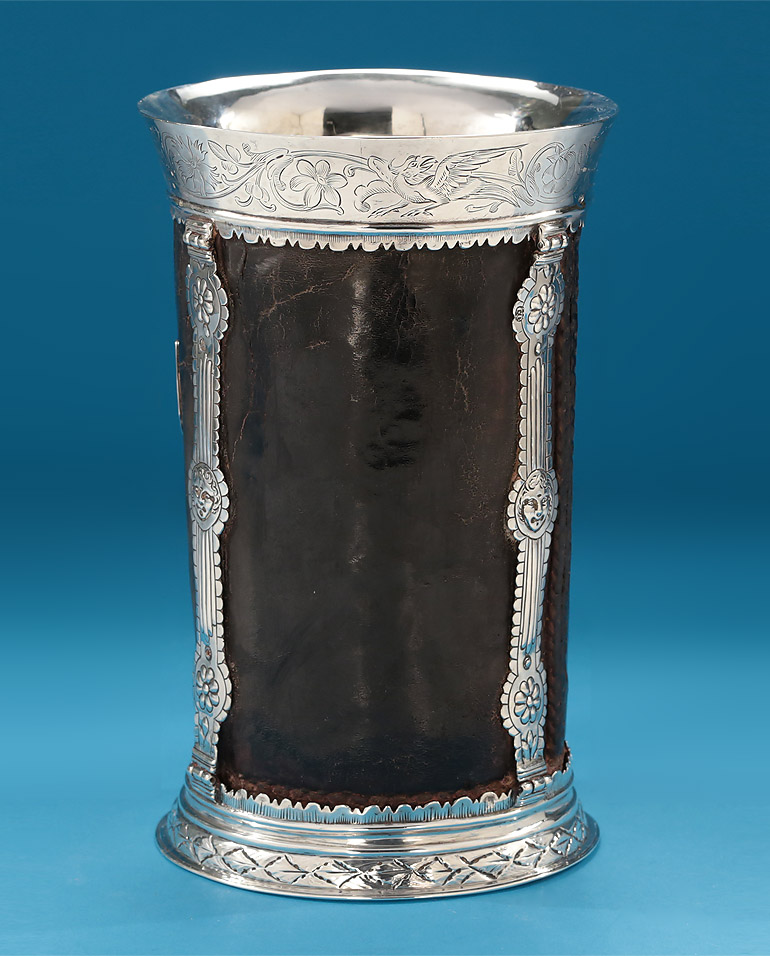
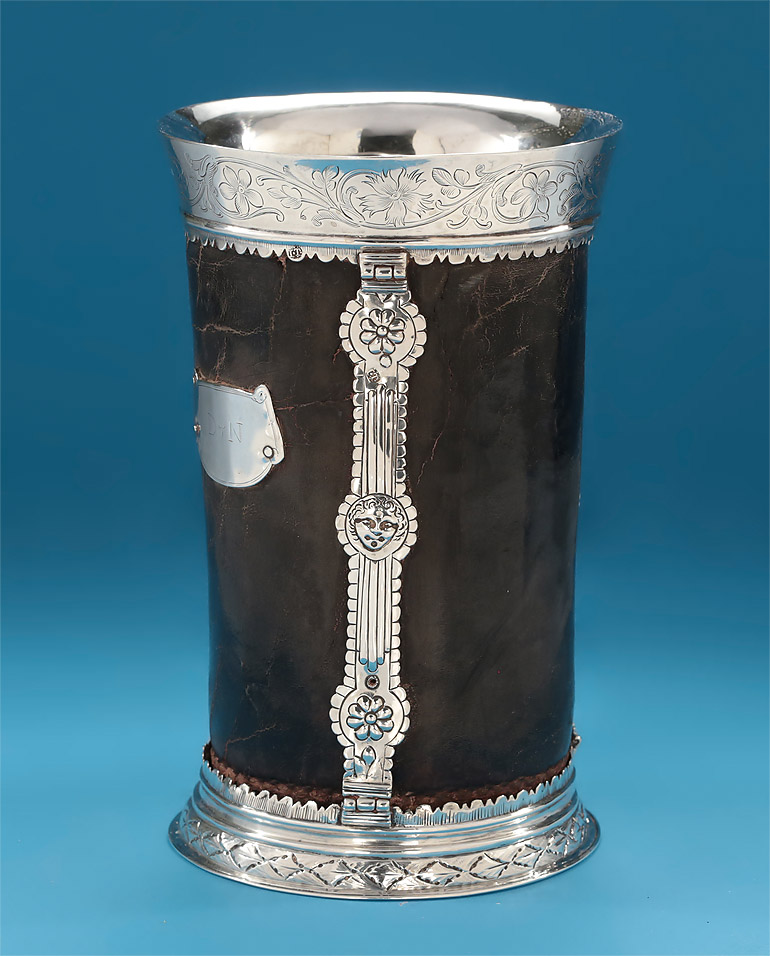 |
|
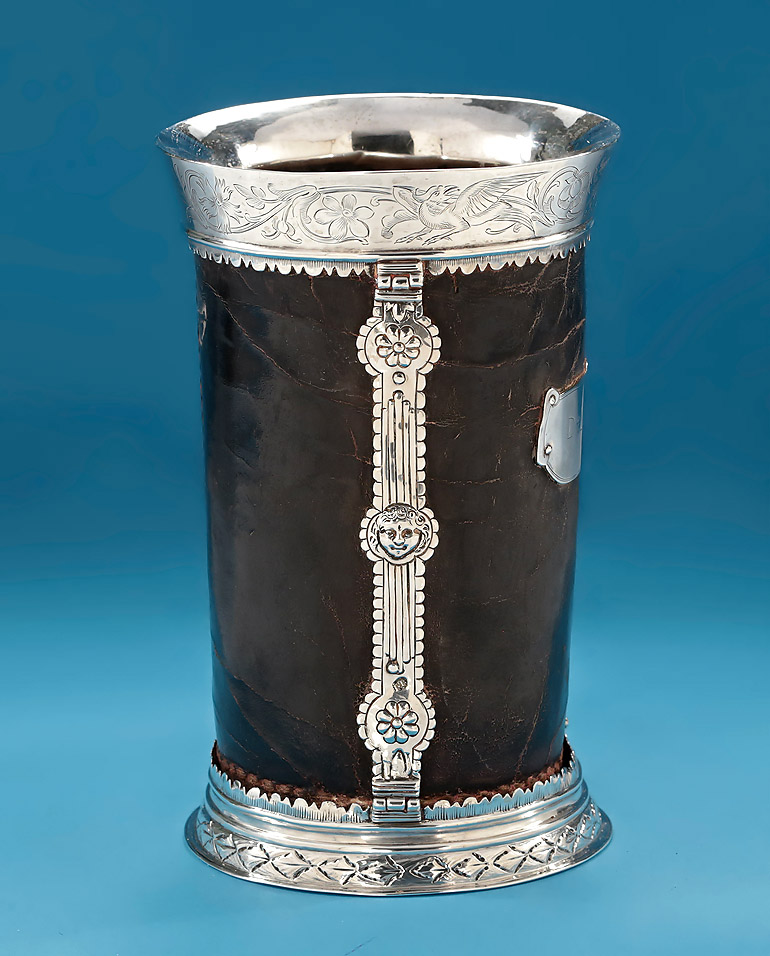 |
Side One
|
|
Side 2 |
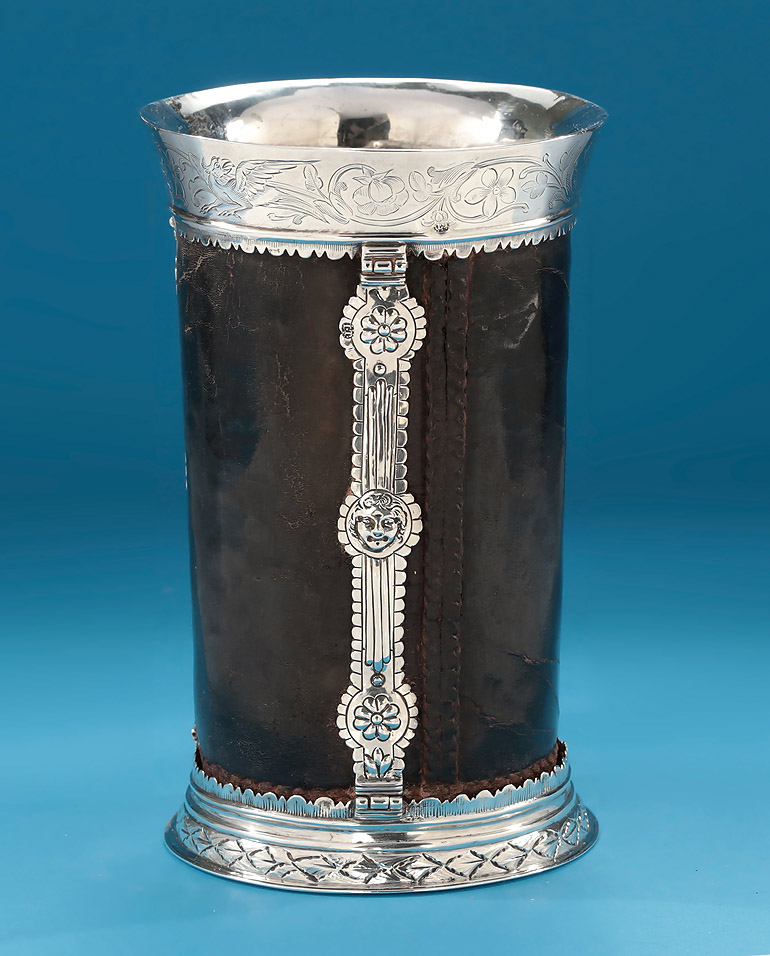
Side Three
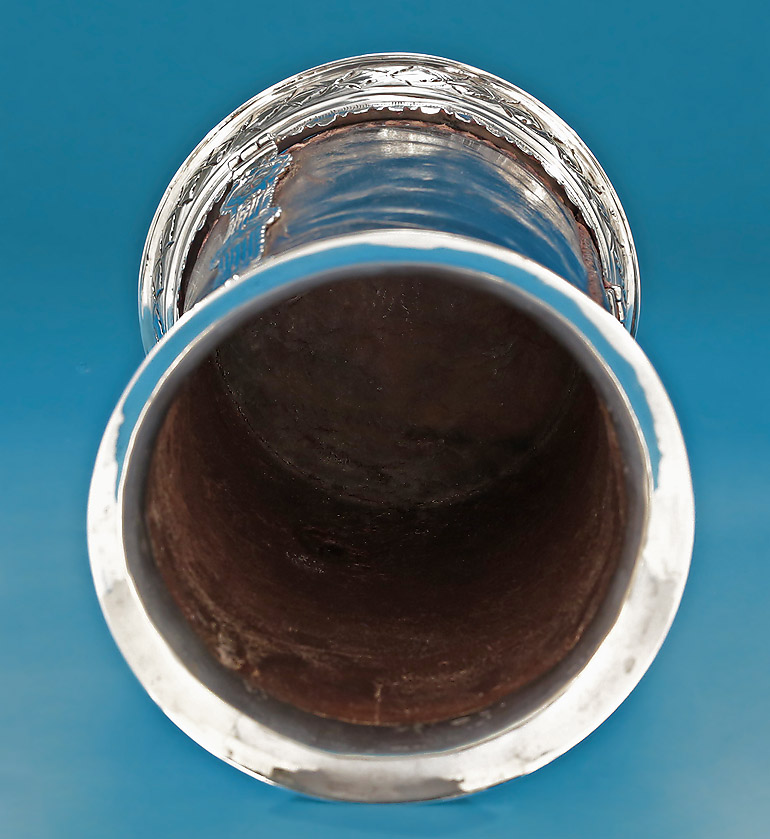
Interior
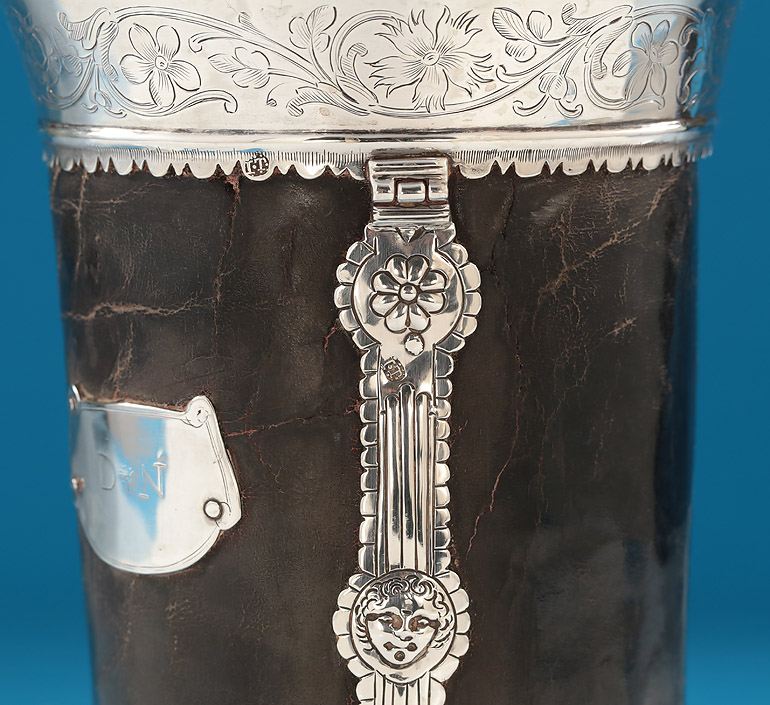
Mark on both rim and upright support
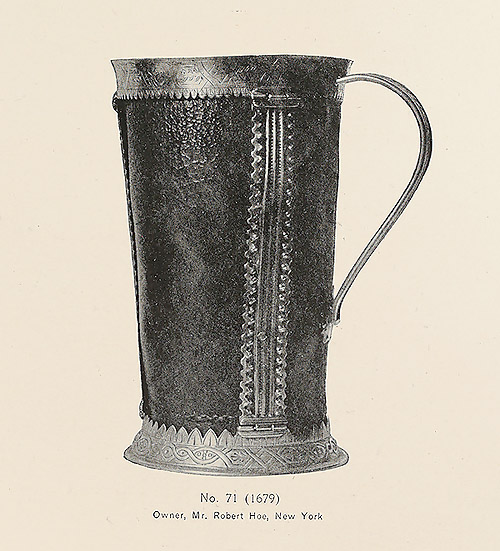
A tapered form Black-Jack (1679), Old London Silver, Montague Howard, p. 115, Pl. No. 71
(Pictured
below with a William & Mary Silver Tot Cup, Ralph Leake, London, 1695)
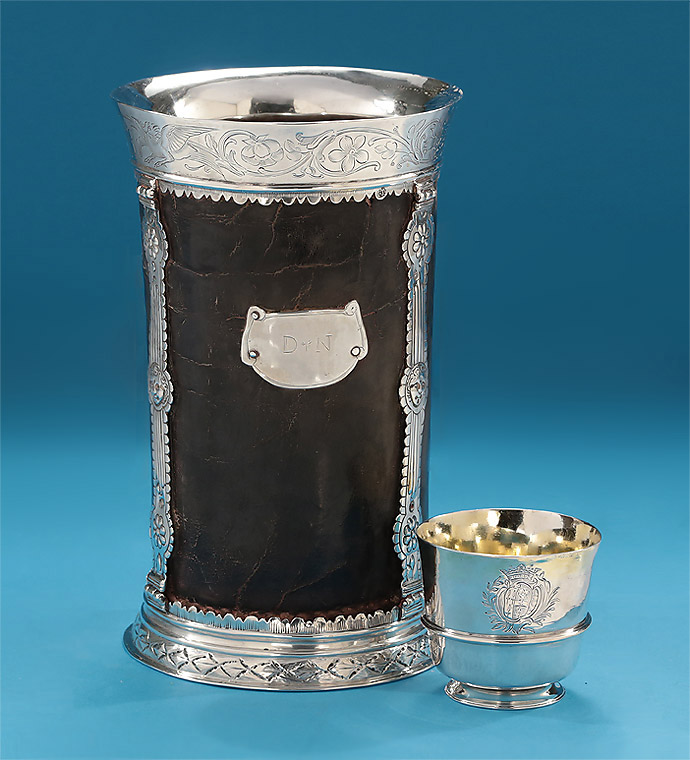
Also See :
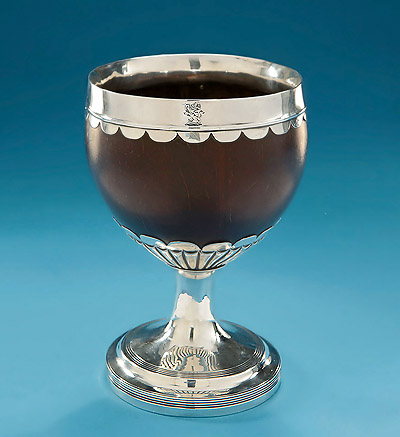
George III Silver-Mounted Coconut Cup
Josiah Snatt, London 1813
The coconut cup with scalloped silver rim crested with a lion rampant,
above a scalloped and fluted base mount descending to a pedestal foot;
the rim and foot marked
5-7/8" High / 4' Wide (Bowl) / 3.5" Wide (Base) / 7.2 oz. overall
We welcome and encourage
all inquiries regarding our stock. We will make every attempt to answer any questions you might
have.
For
information, call (901) 761-1163 or (901) 827-4668,
or
Email : mfcreech@bellsouth.net or mfordcreech@gmail.com
American Express, Mastercard, Visa and Discover accepted

 
M. Ford Creech Antiques & Fine Arts / 581
South Perkins Road / Memphis,
TN 38117 / USA /
Wed.-Sat. 11-6, or by appointment
|
|
Accessories Ceramics
Early Asian Ceramics
Fine Art
Furniture
Glassware
Silver
Home
Silver-Mounted Leather Black-Jack of Beaker Form, I.T within a pelleted oval,England, 18th C.
© The images, concepts and text herein are subject to copyright.
Should you wish to reproduce any part of this site's content, simply request permission.
We also ask that any reproduction be attributed properly.
|
|
|













